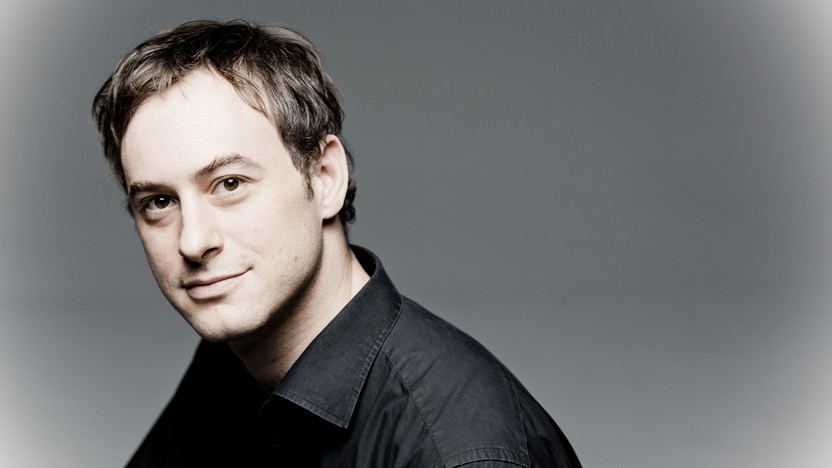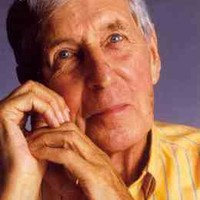Season Finale: Jonathan Cohen Conducts Beethoven’s Fourth Symphony

Sponsored By
- June 13, 2020


Sponsored By


(Duration: 18 min)
Michael Tippett only entered the upper echelon of British composers once he was in his forties, but his decades of musical and personal growth had prepared him to become one of the leading voices of his generation. One distinguishing quality was his devotion to England’s musical past, as seen in a landmark amateur production he conducted that stripped away the Romantic bloat that had overtaken George Frideric Handel’s Messiah, or in his revivals of Henry Purcell that restored the old practice of casting a countertenor. Tippett was also a pacifist and conscientious objector who served a two-month jail sentence during World War II, and he explored his own inner life through Jungian psychoanalysis, informing the dichotomies of light and darkness that often colored his vibrant, emotional music.
When the Edinburgh Festival requested a work to honor the 300th birthday of the Italian composer Arcangelo Corelli, Tippett mined music from the second concerto grosso within Corelli’s Opus 6, a collection that was a fixture of English musical life for decades after its posthumous publication in 1714. Those “grand concertos” featuring a solo group of two violins and cello spawned countless imitations, and Tippett honored that tradition by placing the same three instruments in the foreground. Corelli’s model used an accompanying string ensemble as well as basso continuo, that shared bass line played by harpsichord and other low instruments; in a similar fashion, Tippett split off a third cluster of his string orchestra to enrich the textures. Rather than dividing the music into formal variations, the Fantasia structure allows for a rapturous and virtuosic exploration of the themes, updating a convention that had been a favorite of Purcell and other English composers in the 17th century.
Aaron Grad ©2023

Franz Joseph Haydn had been serving the Esterhazy family for 30 tireless years when a new prince decided to disband the court’s orchestra and cut back the role of their longtime Kapellmeister. Not that Haydn had any need to worry; after an earlier contract negotiation gave him freedom to publish scores, his music had spread all over Europe and made him the most famous composer alive. Johann Peter Salomon, a German impresario active in England, seized the opportunity and invited Haydn to spend the 1791-92 season in London.
While Salomon and Haydn presented weekly concerts on Mondays in the Hanover Music Rooms, a competing group occupied the same venue on Thursdays for performances featuring Ignaz Pleyel, one of Haydn’s former composition students. As Haydn put it in a letter to a friend in Vienna, “Now a bloody harmonious war will commence between master and pupil.”
Adopting a recent French trend, the Sinfonia concertante, Pleyel impressed his London audiences with diverse concertos for multiple soloists. Not to be outdone, Haydn designed a Sinfonia concertante of his own, using a solo quartet of violin, cello, oboe, and bassoon. By choosing four soloists that encompass a full sweep through the bass and treble registers, Haydn put himself on terrain that was familiar from his dozens of string quartets, and often the soloists play as if they are a self-contained chamber music group, with their statements framed by the subtlest of plucks from the strings or long tones from the winds.
The central Andante emphasizes the singing qualities of the soloists, placing them in shifting duets and trios in sweet harmony. The finale continues in an operatic vein, interrupting the action for free-flowing recitatives from the solo violin.
Aaron Grad ©2022
 Listen to Audio
Listen to Audio
Ludwig van Beethoven’s first two symphonies took their cues from Franz Joseph Haydn, the formidable “father of the symphony” and Beethoven’s teacher for a short while after he moved to Vienna. Soon enough, Beethoven honed a symphonic voice that eclipsed even Haydn’s in its scale and grandeur, beginning with the massive Symphony No. 3 (Eroica) from 1803 and continuing in the fateful Symphony No. 5 from 1808. Sandwiched between those landmark symphonies was a smaller specimen, the Symphony No. 4 in B-flat Major, underscoring Beethoven’s lasting debt to Haydn.
Beethoven composed the Fourth Symphony in mid-1806, and he first unveiled it at a private concert in March 1807. Close followers of Haydn’s London symphonies might have noted Beethoven’s nod to the Symphony No. 102, which likewise begins with a held B-flat in octaves. Whereas Haydn made a subtle detour to B-flat minor in his introduction, Beethoven fully embraced the move to the minor scale, until the harmonies sneak back to the major key via one of the score’s many slippery and surprising transitions, launching the Allegro vivace body of the movement.
The Adagio begins with an introductory figure that seems to have lingered from the end of the first movement, preparing the way for a sweet, singing melody. The third movement was labeled a Minuet, but the quick and boisterous music is really a scherzo in all but name, representing Beethoven’s faster and wilder take on Haydn’s dancing diversions.
Beethoven’s finale is full of Haydn’s impish wit, and it saves the best punch line for the end, when the violins, as if thoroughly exhausted, slowly trudge through the main theme one last time. After a similarly lethargic response from the bassoons and then the cellos and basses, the group rallies to end the symphony with an energetic flourish.
Aaron Grad ©2022
Get driving directions and find nearby parking.
Find dining options close to the venue.
View seating charts to find out where you'll be seating.
SPCO concerts are made possible by audience contributions.
For exclusive discounts, behind-the-scenes info, and more:
Sign up for our email club!
